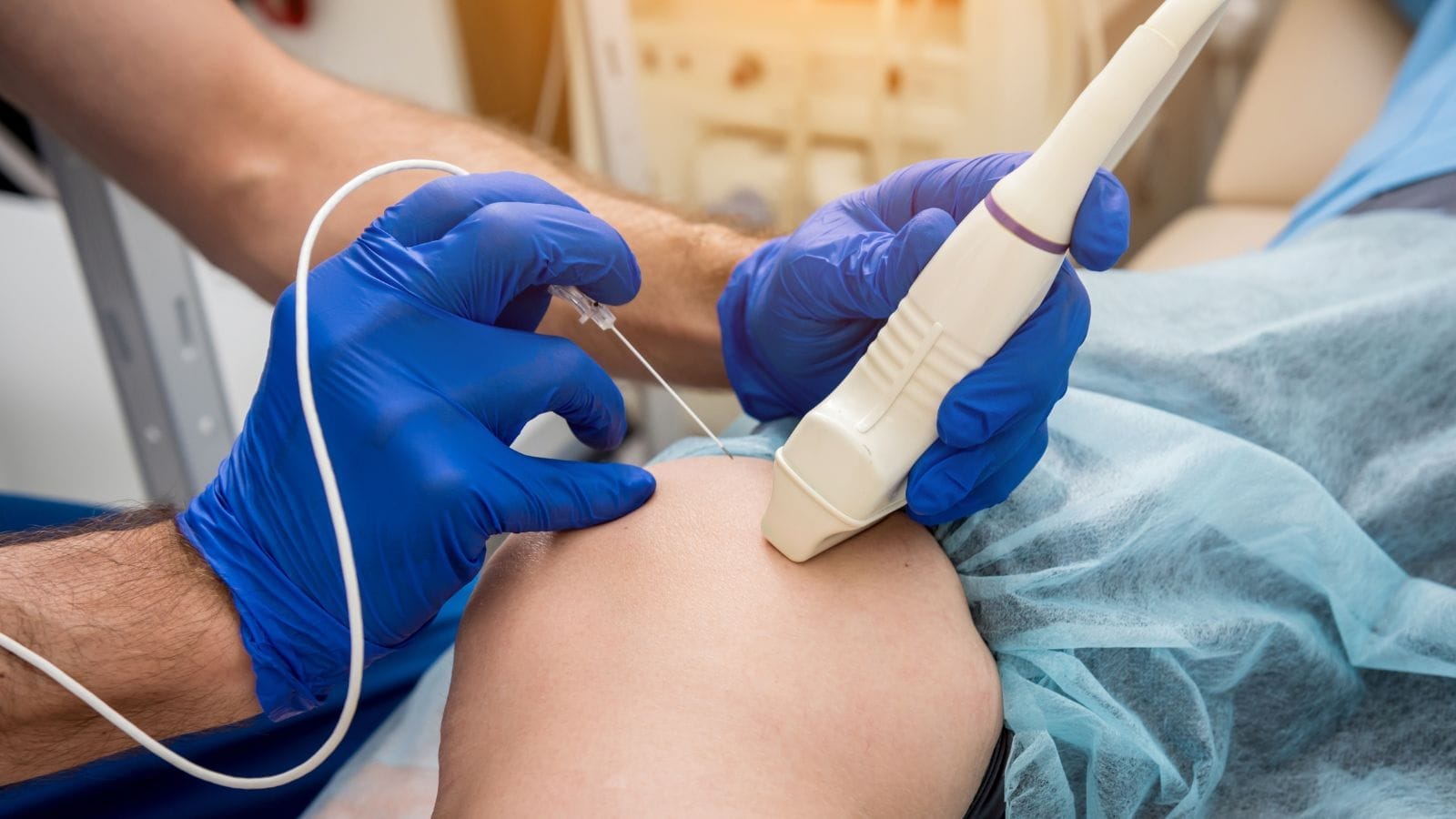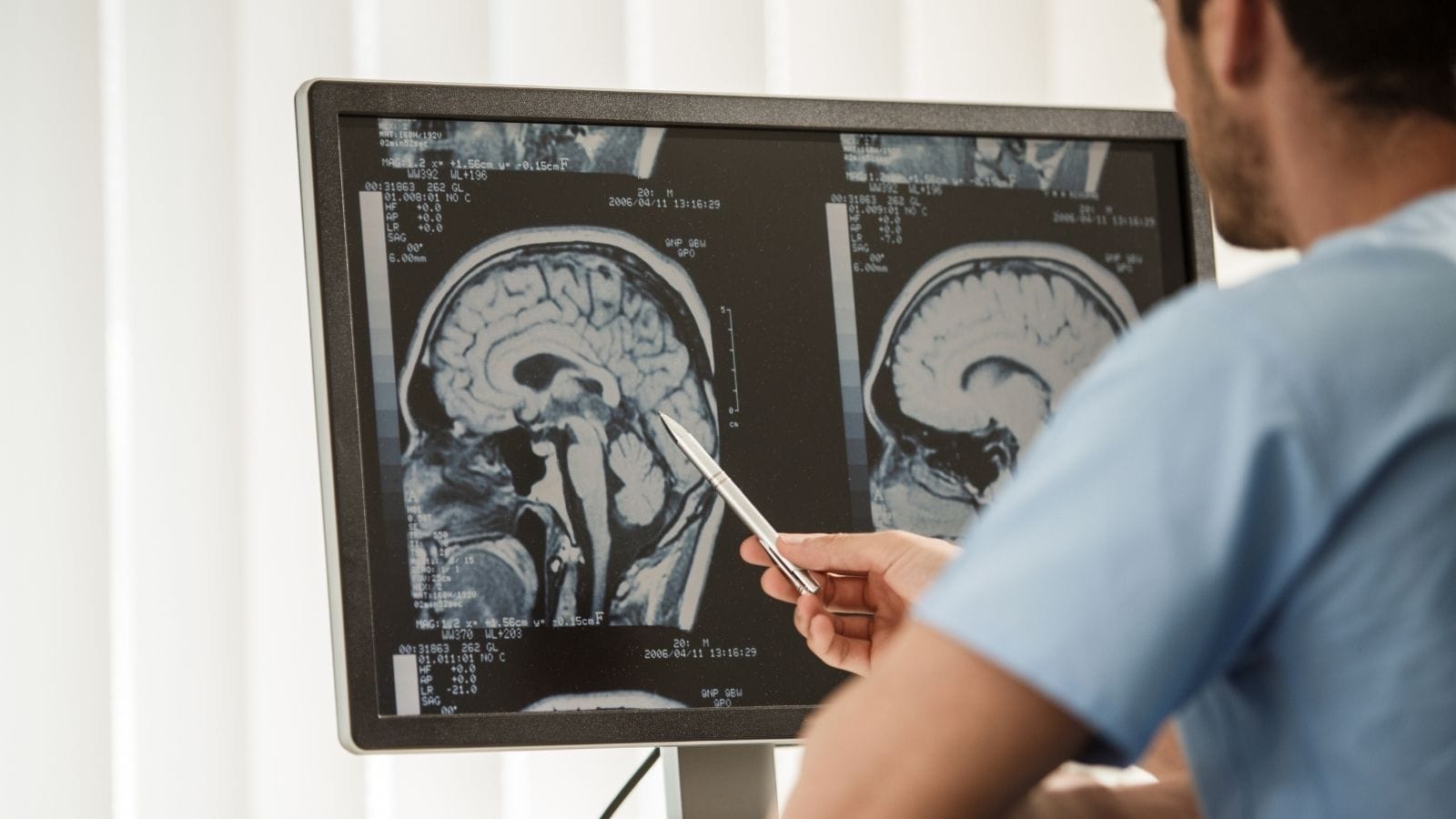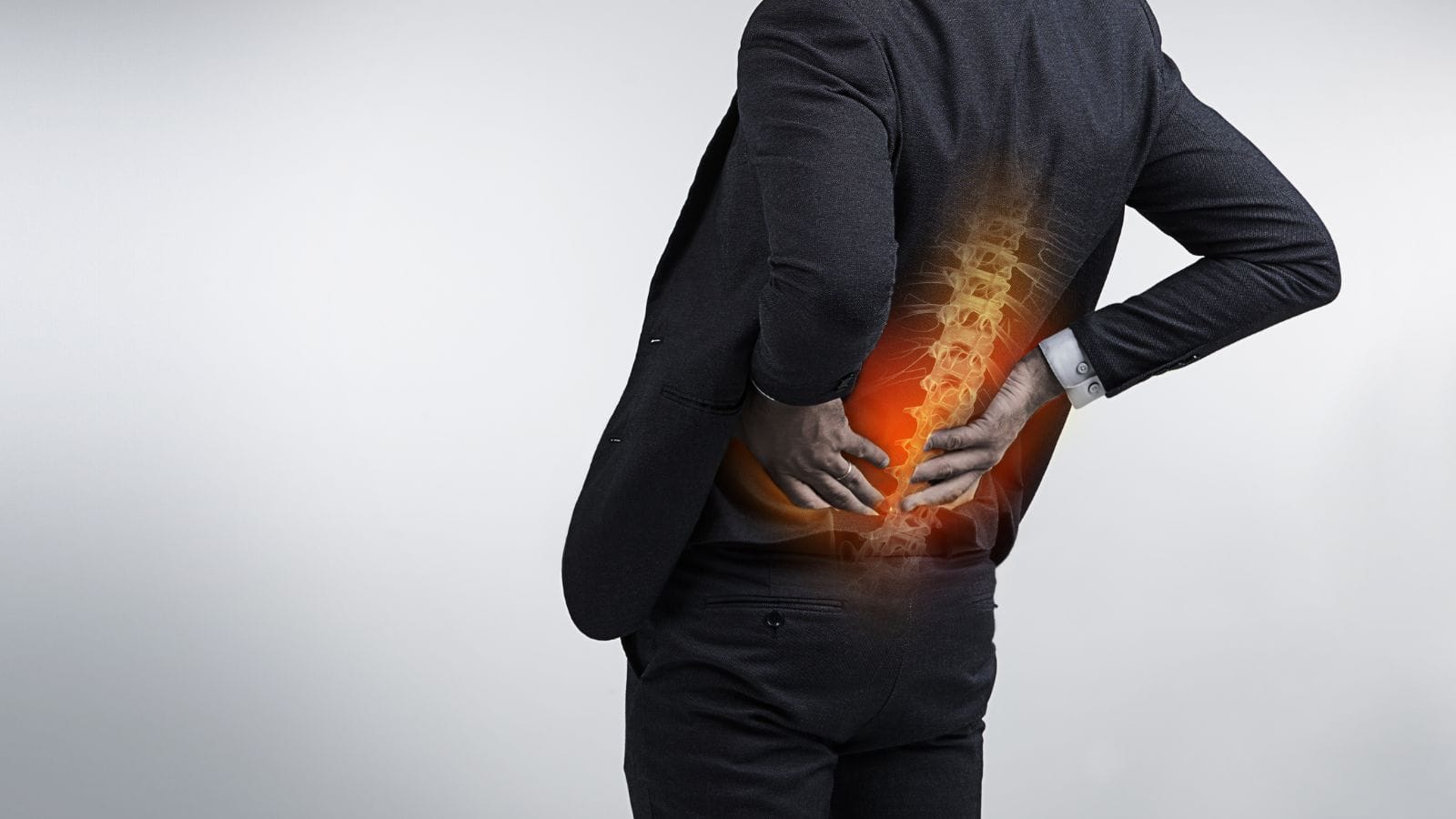Percutaneous sacroplasty is a minimally invasive treatment for sacral aneurysmal bone cysts. The procedure involves injecting bone cement into the cyst cavity to stabilize the bone and relieve pain.
Performed under imaging guidance, sacroplasty ensures precise placement of the cement, reducing the risk of complications. Patients usually return home the same day.
This treatment strengthens weakened bone structure, alleviates pressure symptoms, and significantly improves mobility and quality of life.
Percutaneous sacroplasty is a safe and effective alternative to surgery, especially in patients where traditional surgical interventions may carry higher risks.

Prof. Dr. Özgür KILIÇKESMEZ
Interventional Radiology / Interventional Neuroradiology
Prof. Dr. Kılıçkesmez holds the Turkish Radiology Competency Certificate, the Turkish Interventional Radiology Competency Certificate, Stroke Treatment Certification, and the European Board of Interventional Radiology (EBIR). In his academic career, he won the Siemens Radiology First Prize in 2008.
What Is a Sacral Aneurysmal Bone Cyst (ABC)?
An aneurysmal bone cyst is fundamentally a bone lesion made up of blood-filled spaces, which may contain fluid or clotted blood, and is separated by septa. The term “aneurysmal” indicates that these cysts can expand like a balloon, weakening the bone structure.
Why Is the Sacrum Important?
The sacrum is an inverted triangle-shaped bone located just below the lower back, where the spine joins the pelvis. This bone plays a critical role in transferring body weight to the legs and maintaining balance while walking, sitting, or standing. Sacral nerve roots are also located here, so any lesion in this area can present with pain or neurological symptoms.
- Why Are Sacral ABCs Rarer?
Aneurysmal bone cysts account for only about 1% of all bone tumors. The sacral region is an even rarer location for these cysts (< 4%). When they do occur, they require a specialized approach for treatment because of the sacrum’s complex structure and nerve connections.
- More Common in Young People
ABCs usually occur in childhood or adolescence. While this age group predominates for sacral ABCs, they can also be seen in adults. Although there is a slight female predominance, they can occur in both genders.
What Are the Symptoms of Sacral ABCs?
- The symptoms of a sacral aneurysmal bone cyst typically begin slowly and insidiously. Patients may initially experience mild pain, which can intensify over time. The severity of symptoms can vary depending on the size, location of the lesion, and its relationship with nerve roots.
Low Back and Hip Pain
Pain in the sacral area may be felt as discomfort during prolonged sitting or as pain radiating to the back when standing. Sometimes, the pain may extend to the hips or legs.
- Neurological Symptoms
If the cyst presses on nerve roots, numbness, tingling, or weakness in the legs can occur. Nerve compression symptoms can significantly reduce quality of life.
- Swelling or Mass Sensation
Rarely, if the cyst grows beyond the bone, a swelling or mass may be detected on physical examination. This is especially seen in cysts extending into soft tissue around the sacrum.
- Limitations in Daily Life
Because of pain, patients may have difficulty with daily activities such as bending, sitting, or walking. Increased pain or numbness at night may also disrupt sleep.
How Are Sacral ABCs Diagnosed?
When a sacral ABC is suspected, a stepwise assessment is performed for diagnosis. This includes clinical examination, imaging techniques, and biopsy procedures.
Clinical Examination
A detailed history is taken about the onset, type, and severity of pain. Neurological examination assesses reflexes, sensation, muscle strength, and walking patterns.
- Radiological Imaging
X-ray: Usually the first step. Due to the sacrum’s complex anatomy, it may not always provide clear information. However, the classic “soap bubble” or “balloon-like” appearance can be a clue.
Computed Tomography (CT): Provides more detail about bone structure, cyst size, bone integrity, and any soft tissue extension.
Magnetic Resonance Imaging (MRI): The most sensitive method for evaluating soft tissue and nerve roots. Typical “fluid-fluid levels” are often seen in ABCs.
Bone Scintigraphy: Shows bone metabolic activity. Although not specific, it helps assess the cyst’s activity.
- Biopsy and Histopathological Examination
A tissue sample from the lesion is required for definitive diagnosis.
Fine Needle Aspiration Biopsy (FNAB): A minimally invasive, quick method, but the cellular material obtained may not always be sufficient for diagnosis.
Core Needle (Tru-Cut) Biopsy: Used to obtain a larger tissue sample, allowing for better histological examination.
Open Biopsy: A more invasive method used when adequate tissue cannot be obtained or in complex cases.
On biopsy, characteristic features such as “blood-filled cavities, septa, and osteoclast-like giant cells” are seen under the microscope. Additionally, recent genetic findings (rearrangement of the USP6 gene) can aid in diagnosis.
What Are the Conventional Treatment Methods?
In sacral ABC treatment, the method chosen depends on cyst size, location, and patient symptoms. The traditional approach mainly focuses on surgical procedures and interventional radiological techniques.
Surgical Curettage
This involves surgically cleaning out the inside of the cyst. After curettage, the cavity may be filled with bone grafts or similar materials. The procedure requires special care due to the important vascular and neural structures around the sacrum. There is a risk of bleeding and recurrence.
- Selective Arterial Embolization (SAE)
This reduces blood flow to the cyst by blocking its blood vessels with special agents. Cutting off blood supply may slow or stop cyst growth. It can be used alone or before surgery to reduce bleeding.
- En Bloc Resection
This aims to remove the affected bone in one piece with wide surgical margins. This method is rarely preferred in the sacrum due to technical difficulty and risk of significant functional loss.
- Percutaneous Sclerotherapy
This involves injecting a sclerosing (adhesive or fibrosing) agent into the cyst to close its cavities. Multiple sessions may be required, and there are risks such as damage to surrounding tissues.
- Radiotherapy
This may be considered for patients who cannot undergo surgery or if other treatments fail. However, caution is necessary due to possible long-term side effects of radiation and the risk of secondary cancer.
What Is Percutaneous Sacroplasty?
Percutaneous sacroplasty is similar to cement injection procedures like vertebroplasty or kyphoplasty performed on the spine, but applied to the “sacrum” region. The main aim is to stabilize the structural defect in the sacrum (cyst, fracture, or metastatic lesion) and relieve the patient’s pain.
- How Is It Performed?
Under fluoroscopic (live X-ray) or CT guidance, special needles are used to reach the lesion in the sacrum. Polymethylmethacrylate (PMMA) bone cement is then injected. This cement is a paste-like material that hardens when heated and fills the cavities—much like concrete poured into a silicone mold with the air bubbles removed.
The goal is to fill the cyst or fracture cavity, restore structural stability to the sacrum, and reduce nerve compression.
- What Are the Advantages?
Minimally Invasive: No large incisions are needed, and the procedure can usually be performed with local anesthesia or mild sedation.
Fast Recovery: Patients are usually discharged the same day or the following day.
Pain Control: High potential for rapid pain improvement.
What Is the Role of Percutaneous Sacroplasty in the Treatment of Sacral ABCs?
Although percutaneous sacroplasty is not yet a standard first-line treatment for sacral ABCs, its role is growing with increasing case reports in the literature. The main logic is to reinforce the sacrum, which is weakened and sometimes at risk of collapse due to the cyst, with cement injection.
Why Might It Be Used?
Stabilizing the bone defect caused by the sacral ABC can significantly reduce pain. Another advantage is that patients can quickly return to daily life without the need for major surgery.
When Can It Be Preferred?
- In cases where complete surgical removal of the cyst is difficult or high-risk,
- When the patient’s general condition does not allow major surgery,
- As a complementary treatment after procedures such as selective embolization.
Long-Term Effectiveness
Although there are still limited large-scale studies, small-scale studies report that sacroplasty is successful in pain control and may prevent cyst regrowth.
What Are the Advantages of Percutaneous Sacroplasty?
In difficult-to-reach lesions like sacral ABC, percutaneous sacroplasty offers several advantages:
Minimal Surgical Intervention
Compared to traditional surgical methods, there are no large skin incisions, resulting in less blood loss and fewer wound problems. This is especially important in elderly or comorbid patients.
- Rapid Pain Control
The cement injected into the cyst or bone defect hardens, supporting the bone. This support often leads to significant pain reduction the same day or within a few days.
- Short Hospital Stay
Unlike major surgical procedures, most patients can be discharged soon after percutaneous sacroplasty, sometimes even on the same day.
- Quick Return to Daily Life
Compared to the long recovery periods after surgery, patients generally return to normal activities faster after percutaneous sacroplasty. This reduces loss of work time and causes less disruption to social life.
- Potential to Reduce Neurological Complications
Sacral ABCs can cause numbness, tingling, or pain in the legs by compressing nerve roots. Once the lesion is stabilized, nerve compression can also be relieved.
What Risks Exist During and After the Procedure?
Like all medical interventions, percutaneous sacroplasty carries potential risks. While these risks are reduced in experienced hands, they cannot be completely eliminated.
Cement Leakage (Extravasation)
Injected cement may leak through cracks in the cyst or bone. While most leaks are not serious, leakage into nerve or vascular channels can cause compression and pain.
- Neurological Injury
Although rare, nerves may be damaged by the cement or the needle. This can cause temporary or permanent neurological symptoms.
- Infection
As with any percutaneous procedure, there is a risk of infection at the needle entry site. Good sterilization and preventive measures significantly reduce this risk.
- Bleeding and Hematoma
The sacrum can be rich in blood vessels. Needle passage may injure vessels, causing minor bleeding or hematomas. The risk is higher in patients with coagulation disorders.
- Fracture Risk in Adjacent Bones
Injecting a hard material into bone changes biomechanical load distribution, which may place extra stress on nearby bones. Especially in osteoporotic patients, there is a very low but possible risk of new fractures in the long term.
- Allergic Reactions
Allergic reactions may occur in patients with known allergies to PMMA or other materials used in the procedure. It’s important to question any known allergies before the procedure.
What Is the Recovery Process Like After Percutaneous Sacroplasty?
Percutaneous sacroplasty offers patients rapid relief and a quick return to daily life. The recovery period generally involves the following stages:
First Hours
After the procedure, the patient is monitored. Pain control and potential complications are closely assessed. Most patients can return home the same day or the following morning.
- Reduction in Pain
As the cement hardens, the sacrum becomes more stable. Most patients feel a significant reduction in pain within 24-48 hours after the procedure. This can be likened to stabilizing a rocking chair by placing a wedge under it.
- Return to Physical Activity
As pain subsides, the patient may resume light exercise or daily activities. Walking, gentle stretching, and household activities are generally not restricted. However, heavy lifting and strenuous sports should be avoided for a period.
- Physical Therapy and Rehabilitation
In some patients, physical therapy may be recommended to strengthen the muscles around the spine and lower back. This helps prevent future injuries or pain flare-ups.
Follow-Up
The physician performs regular follow-up imaging to check the cement position and evaluate cyst activity. Supportive treatments (such as calcium, vitamin D, etc.) or additional procedures may be recommended if needed.
- Long-Term Wellbeing
After percutaneous sacroplasty, recurrence of sacral cyst-related pain is rare; however, the true success rate depends on the cyst’s structure, size, and the need for additional treatments.
What Does the Future Hold for Sacral ABC Treatment?
Medical technology is rapidly advancing, opening up new horizons in the treatment of sacral aneurysmal bone cysts. These innovations aim to increase treatment effectiveness and minimize side effects:
More Advanced Imaging and Navigation Systems
Robotic-assisted surgery and three-dimensional (3D) modeling offer much clearer visualization of the cyst’s location in the sacrum before the procedure. This increases the success rate of cement injection and reduces the risk of nerve damage.
- New Generation Bone Cements
Alternatives to the currently used PMMA cement, such as calcium phosphate, magnesium-based, or biologically active bone cements, are being studied. These may provide a more compatible environment for natural bone healing and better long-term integration with bone tissue.
- Combined Treatment Approaches
Combining percutaneous sacroplasty, selective arterial embolization, targeted radiotherapy, and even gene therapy can make sacral ABCs more manageable. Future treatment protocols may emphasize personalized planning for each patient.
- Genetic and Cellular Research
Better understanding of the genetic changes specific to aneurysmal bone cysts (such as USP6 gene rearrangements) could pave the way for the development of drugs or biological treatments targeting these cysts. This may eventually make it possible to shrink cysts without surgical intervention.
- Larger-Scale Clinical Studies
Percutaneous sacroplasty is not yet the most common standard practice for sacral ABCs. However, as more data accumulates, broader research and prospective studies proving its effectiveness are expected to be published.
FAQ
How long should I wait to drive after sacral ABC treatment?
It is generally recommended to be cautious for the first week after the procedure. Once pain is controlled and your doctor approves, you can resume driving.
Can I go swimming after percutaneous sacroplasty for sacral ABC?
Swimming can usually be started after the wound is fully healed and with your doctor’s approval. This process typically does not exceed a few weeks.
Does regular exercise completely prevent sacral cyst formation?
Exercise can strengthen bones and muscles, but is not sufficient alone to completely prevent aneurysmal bone cyst formation.
What vitamins are especially recommended for nutrition in sacral ABC?
Foods containing calcium and vitamin D support overall bone health.
Can someone diagnosed with sacral ABC take a long flight?
Prolonged immobility can increase pain, but travel is possible with caution and by following doctor’s recommendations.
How long should heavy lifting be avoided after percutaneous sacroplasty?
Patients should generally avoid heavy lifting for the first few weeks. This period is important to protect sacral healing. Gradual return to normal activity can be planned based on medical checkups.
Can sacral ABC disappear completely with non-surgical methods?
Small and certain types of cysts may shrink over time, but complete disappearance is rare.
How does treatment change if sacral ABC is detected during pregnancy?
Special precautions are taken to protect the baby when planning radiological imaging and interventions during pregnancy. Treatment may be postponed depending on urgency, or methods deemed safe for the mother are chosen. Detailed evaluation is done in cooperation with obstetric specialists.
How soon can someone return to sports after sacral ABC treatment?
It is advisable to start with low-intensity walking and stretching exercises. Depending on the speed of recovery, return to sports can be planned within a few weeks to a few months. Strenuous activities should be avoided for a longer period.
Can someone treated for sacral ABC work in an office environment?
With regular breaks and proper support, most people can continue office work, as work style and posture may affect pain.
Is percutaneous sacroplasty an expensive procedure?
The cost varies depending on equipment and center. Compared to traditional surgeries, the short hospital stay may provide a cost advantage. For precise pricing, it is best to consult the clinic in advance.
What is the chance of full recovery in sacral ABC treatment?
Success depends on cyst size, location, and general health. Some patients return to a pain-free, active life, while a small group may need additional procedures. Regular follow-up is important to detect recurrence early.
What psychological experiences can patients expect after being diagnosed with sacral ABC?
Diagnosis may cause anxiety and uncertainty for many. Pain and limited movement can increase stress. Relief of pain and regaining mobility during treatment can boost morale. Psychological support or counseling can help patients adapt and reduce anxiety. Support from loved ones is also a significant source of motivation.
Can sacral ABC be completely prevented?
These cysts are generally linked to unpredictable genetic or structural tendencies, so there is no definitive method of prevention. Healthy eating, regular exercise, and lifestyle factors supporting bone density benefit overall bone health but cannot guarantee absolute prevention. Early diagnosis and regular monitoring increase the chance of effective intervention. Reporting unusual pain or symptoms to your doctor is important.
Does sacral ABC pain worsen with stress?
Stress can heighten the perception of pain and make existing pain feel more severe.
What steps are taken if the cyst in the sacral region risks nerve damage?
If nerve root compression is suspected, rapid neurological assessment is required. Advanced imaging such as MRI may be used for detailed evaluation. Early diagnosis helps prevent permanent nerve damage. Surgery, percutaneous sacroplasty, or additional treatments may be needed to relieve compression. Rehabilitation is important to maintain and strengthen nerve function.
Does sitting posture affect pain after percutaneous sacroplasty?
Correct sitting posture can reduce pressure on the sacral area and help decrease pain intensity.
What anesthesia methods are used during percutaneous sacroplasty?
Depending on the procedure and patient condition, local anesthesia, sedation, or general anesthesia can be used. For many patients, local anesthesia and mild sedation are sufficient. In some cases, deeper anesthesia may be needed. The appropriate anesthesia type is decided by the anesthesiologist for safety and comfort.
How can recurrent pain after sacral ABC treatment be prevented in the long term?
Attending regular follow-up appointments and performing recommended checks can help detect recurrences early. Physical therapy strengthens lower back and spinal muscles, supporting the sacral area. Maintaining a healthy weight prevents unnecessary pressure on the bone. Not smoking and adopting a calcium-rich diet support bone quality. Painkillers or supportive medications should be used under medical supervision if necessary.
Can a person on blood thinners undergo percutaneous sacroplasty?
Medication adjustment or temporary discontinuation may be necessary to manage bleeding risk. This should always be planned with a specialist.

Interventional Radiology and Neuroradiology Speaclist Prof. Dr. Özgür Kılıçkesmez graduated from Cerrahpaşa Medical Faculty in 1997. He completed his specialization at Istanbul Education and Research Hospital. He received training in interventional radiology and oncology in London. He founded the interventional radiology department at Istanbul Çam and Sakura City Hospital and became a professor in 2020. He holds many international awards and certificates, has over 150 scientific publications, and has been cited more than 1500 times. He is currently working at Medicana Ataköy Hospital.









Vaka Örnekleri